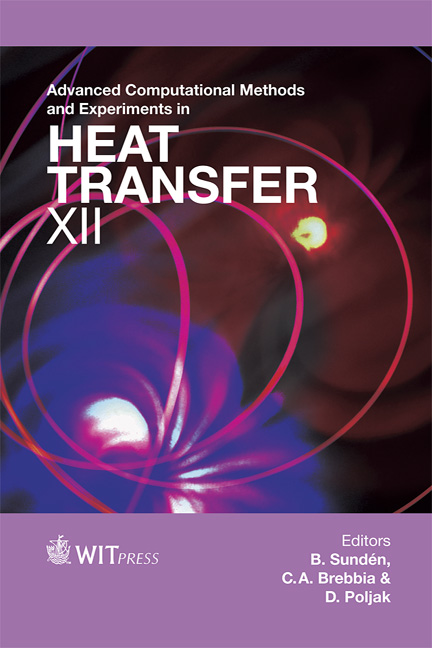Numerical Study Of The Flow Inside An Alternator: Application To The Thermal Optimization Of The Machine
Price
Free (open access)
Transaction
Volume
75
Pages
11
Page Range
27 - 37
Published
2012
Size
1,386 kb
Paper DOI
10.2495/HT120031
Copyright
WIT Press
Author(s)
P. O. Jandaud, S. Harmand & M. Fakes
Abstract
In this paper, the flow inside an electric machine called a starter-alternator is studied parametrically with CFD in order to be used by a thermal lumped model coupled to an optimization algorithm using Particle Swarm Optimization (PSO). In the first case, the geometrical parameters are symmetric allowing us to model only one side of the machine. The optimized thermal results are not conclusive. In the second case, all the parameters are independent. In this case, the flow is strongly influenced by the dissymmetry. Optimization results are this time a clear improvement compared to the original machine. Keywords: CFD, lumped method, electric machine, optimization, PSO. 1 Introduction In order to reduce CO2 emissions and gas consumptions, the automotive industry is developing more and more hybrid vehicles. Therefore, it needs to create innovative technologies. For mild-hybrid cars, a combustion engine is still necessary but it is coupled to an electric machine called starter-alternator. This machine is powerful, the electric power produced is around 10 kW, and compact, its diameter is approximately 20 cm and its length 10 cm. The cooling of the starter-alternator is a critical point in its design as high temperatures affect the performances of the machine. To study the thermal behaviour of electric machines, a code named SAME (Aero-thermal Simulation of Electric Machines) has been developed at the laboratory. The code uses lumped method to create a network of thermal conductances and can be coupled to optimization algorithm. This method is
Keywords
CFD, lumped method, electric machine, optimization, PSO.





